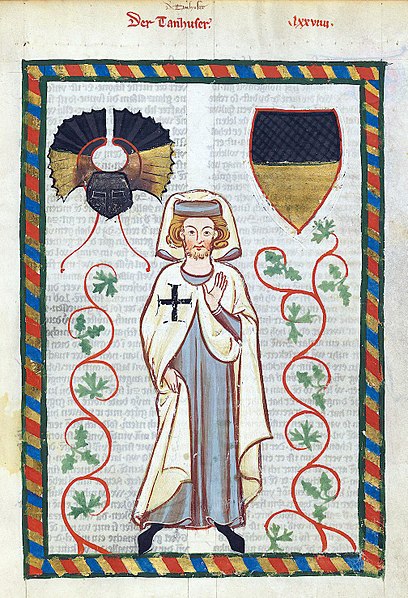Grand Master of the Teutonic Order
The grand master of the Teutonic Order is the supreme head of the Teutonic Order. It is equivalent to the grand master of other military orders and the superior general in non-military Roman Catholic religious orders. Hochmeister, literally "high master", is only used in reference to the Teutonic Order, as Großmeister is used in German to refer to the leaders of other orders of knighthood.
Grand Master of the Teutonic Order
Hermann von Salza, fourth Grand Master of the Teutonic Knights, in a Baroque-era portrait
Coats of arms of the 29 grand masters (until 1470, Heinrich Reuß von Plauen) in the St. Gallen armorial (Cod. sang. 1084)
Grand Master Siegfried von Feuchtwangen enters Marienburg with his knights on 14 September 1309, representing the move of the order's main seat to Prussia (1825 history painting)
The Teutonic Order is a Catholic religious institution founded as a military society c. 1190 in Acre, Kingdom of Jerusalem. The Order of Brothers of the German House of Saint Mary in Jerusalem was formed to aid Christians on their pilgrimages to the Holy Land and to establish hospitals. Its members have commonly been known as the Teutonic Knights, having historically served as a crusading military order for supporting Catholic rule in the Holy Land and the Northern Crusades during the Middle Ages, as well as providing military protection for Catholics in Eastern Europe.
The Order's Marienburg Castle, Monastic state of the Teutonic Knights, now Malbork, Poland
Hermann von Salza, the fourth Grand Master of the Teutonic Knights (1209–1239)
Tannhäuser in the habit of the Teutonic Knights, from the Codex Manesse
Frederick II allows the order to invade Prussia, by P. Janssen







